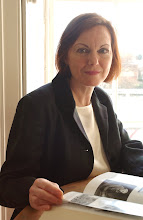


Jenny Wood’s 3xgreat grandparents, George Kerton and Mary Labrum (b. 1789) were married at St George the Martyr, Queen Square, Bloomsbury, in July 1814 (top two photos above by Ninoxowl, Flickr). Mary’s family were almost certainly of Huguenot descent and she was a member of the Independent Tabernacle, St Luke’s, Finsbury, a non-conformist chapel where her younger siblings were baptised. Jenny wonders what Mary’s parents thought about her marrying in a fashionable Anglican church. She does not know how Mary came to be in Bloomsbury or what work she did.
George Kerton gave his occupation as clerk (legal) at the time of his marriage so it is probable that he was employed at nearby Gray’s Inn, one of the four Inns of Court of London (photo above by Dramagirl, Flickr). At the time of the birth of their son, Walter Labrum, in July 1817, the family’s address was Duke Street (now Coptic Street), named after the Duke of Bedford on whose estate much of Bloomsbury sits. George was now described as a ‘gentleman’, ie. of independent means. Walter grew up to become Chief Clerk to the Queen’s Bench.
A daughter, Sarah Ann Kerton, was baptised at St George the Martyr in 1820, by which time the family was living in Henry Street (now Roger Street), just off Gray’s Inn Road. George has now become a ‘Clerk to an Attorney’. Sarah Ann married James Fereday, a silversmith (who later became a gas fitter when houses and businesses began to be lit and heated by coal gas). Henry Thomas Kerton was born in Henry Street in 1822, and his father is described, once again, as a ‘gentleman’. Henry became an artist and photographer. By the time of Thomas Lally’s birth in 1825, George was an attorney, and the family had moved to Robert Street (now Kirk Street), a short distance from their previous residence. Thomas became a French polisher.
Jenny says, ‘I am not sure whether George was a gentleman who dabbled at law, or a legal clerk who called himself a gentleman when unemployed! I feel there may be a story here if only I had more information. So far, I haven’t found George in the Inns of Court archives online. I don’t know where he was born or when. As adults the children are all found south of the river (around Lambeth and Southwark), so I think the family must have moved there during their childhood/teenage years.’
George Kerton gave his occupation as clerk (legal) at the time of his marriage so it is probable that he was employed at nearby Gray’s Inn, one of the four Inns of Court of London (photo above by Dramagirl, Flickr). At the time of the birth of their son, Walter Labrum, in July 1817, the family’s address was Duke Street (now Coptic Street), named after the Duke of Bedford on whose estate much of Bloomsbury sits. George was now described as a ‘gentleman’, ie. of independent means. Walter grew up to become Chief Clerk to the Queen’s Bench.
A daughter, Sarah Ann Kerton, was baptised at St George the Martyr in 1820, by which time the family was living in Henry Street (now Roger Street), just off Gray’s Inn Road. George has now become a ‘Clerk to an Attorney’. Sarah Ann married James Fereday, a silversmith (who later became a gas fitter when houses and businesses began to be lit and heated by coal gas). Henry Thomas Kerton was born in Henry Street in 1822, and his father is described, once again, as a ‘gentleman’. Henry became an artist and photographer. By the time of Thomas Lally’s birth in 1825, George was an attorney, and the family had moved to Robert Street (now Kirk Street), a short distance from their previous residence. Thomas became a French polisher.
Jenny says, ‘I am not sure whether George was a gentleman who dabbled at law, or a legal clerk who called himself a gentleman when unemployed! I feel there may be a story here if only I had more information. So far, I haven’t found George in the Inns of Court archives online. I don’t know where he was born or when. As adults the children are all found south of the river (around Lambeth and Southwark), so I think the family must have moved there during their childhood/teenage years.’



